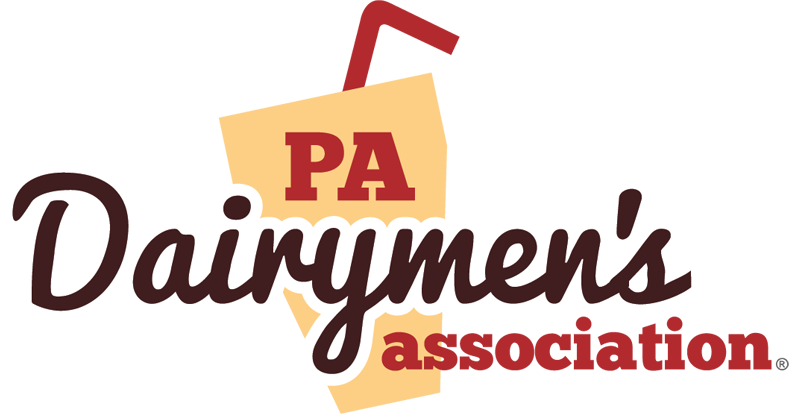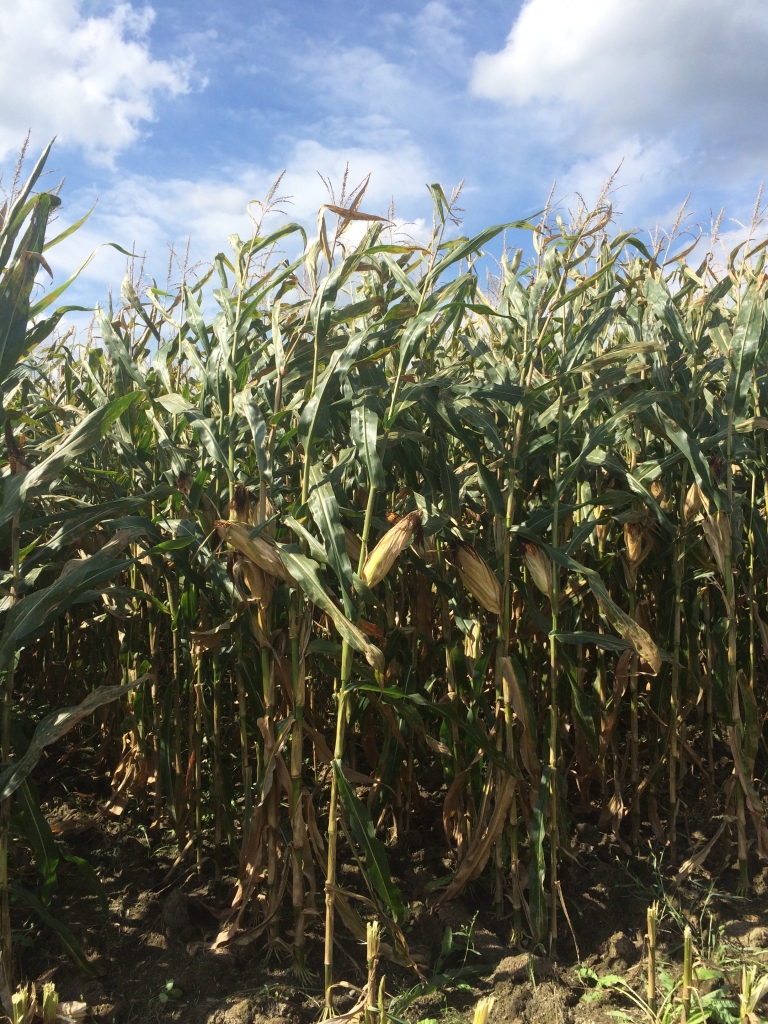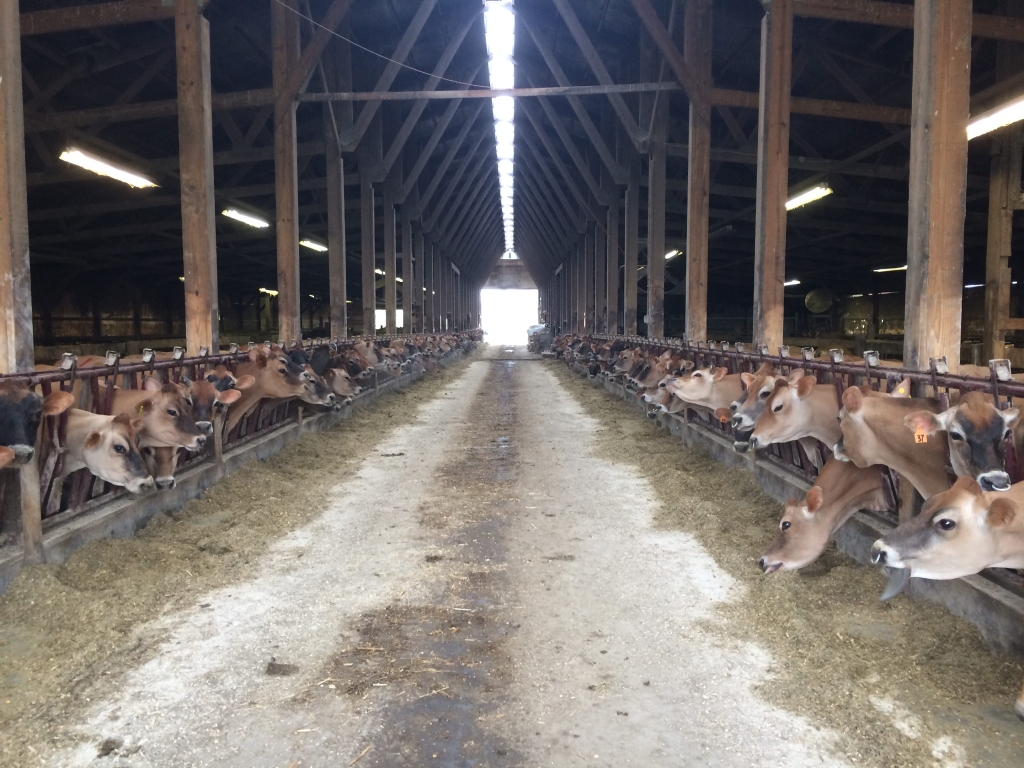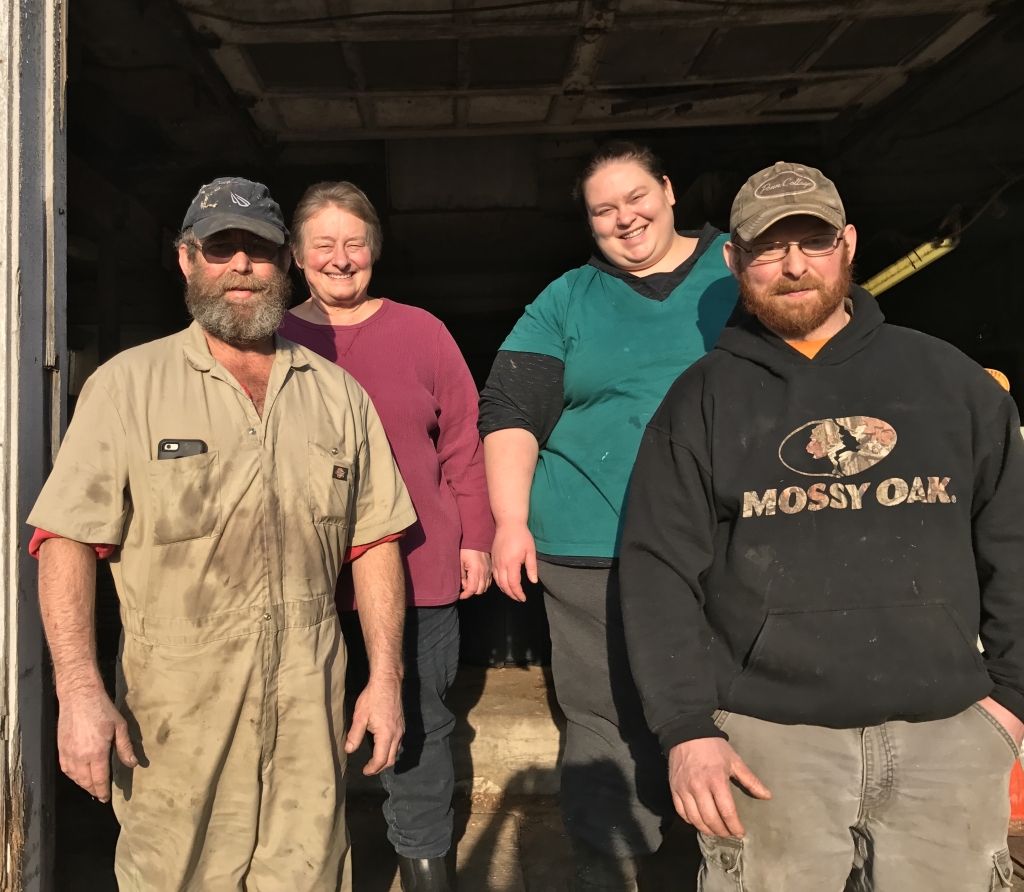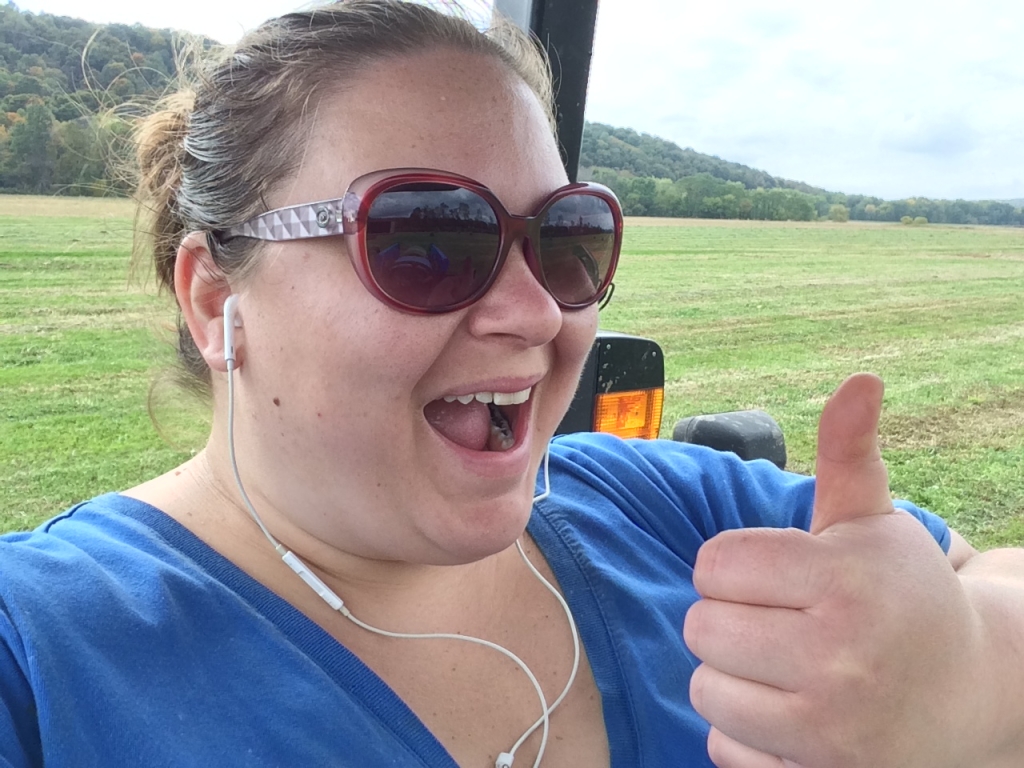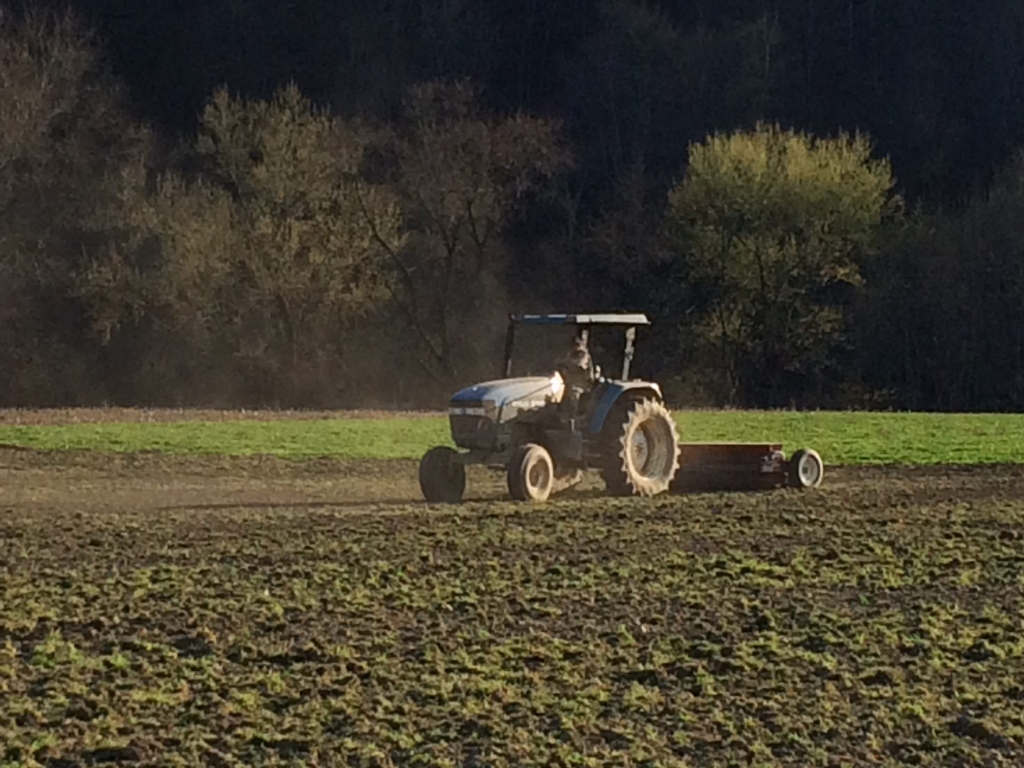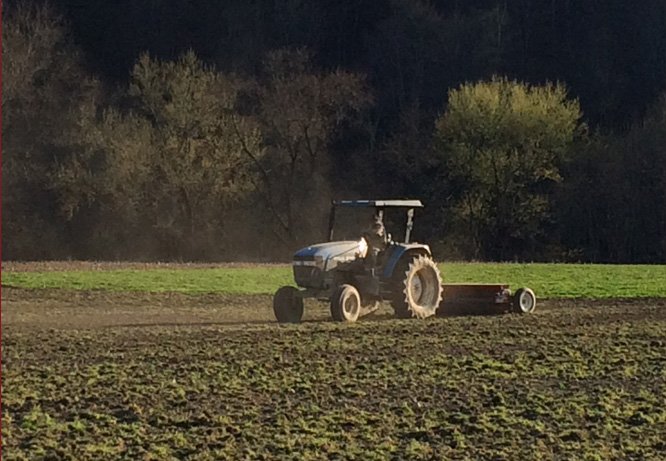
Guest blogger, Jessica Peters, is a 5th generation dairy farmer in northwest Pennsylvania.
It’s no secret that dairy farming has recently gotten a bad rap, and it’s our own fault. It’s so easy for dairy farmers to get caught up in our day-to-day lives that we’ve completely neglected, well…. you, our customers!
Dairy farmers understand that some of what we do looks and sounds scary even though it is safe and has a positive end goal. The problem is that farmers rarely take the time to explain those scary things to you, our customers.
Thank goodness for social media. Through Facebook, blogs, Instagram and even Snapchat, dairy farmers have taken to the internet to share their story and to explain the why of what we do. And, oh boy, is there is a lot to share (and I’m not just talking about the adorable cow photos).
Planting Crops and Using GMOs
Dairy farming isn’t just about milking cows. Modern dairy farmers must be well versed in biology, meteorology, animal behavior, chemistry, technology, veterinary medicine and agronomy, just to name a few. At different times of the year, different areas of our expertise become the priority. Right now, its April and springtime. And, the number one thing on every dairy farmer’s mind is spring planting season.
Planting crops is so much more than just putting a seed in the dirt and waiting for it to grow. It’s the timing, the weather, the equipment we use, the worry that we plant the right seed and that it will produce enough feed to sustain our herd for the next year. Did you know that there are dozens of different varieties of corn seed? Every year, farmers pour over literature and read all the studies to decide which seed we think will produce the right amount of quality feed for our cows. Part of that decision for us includes genetically modified seeds or GMO’s.
GMO Plants and How They are Used
I know, I know – GMO’s sound scary, but they aren’t really as scary as they seem. On our farm, we’ve tried a few different varieties of GMO seed. The main variety we use is called roundup ready corn seed. It’s a variety of corn that is immune to the herbicide roundup.
Roundup is the most widely used herbicide in farming and household because it works. It’s also the safest weed killer on the market. Years and years ago, before the world knew that chemicals could be bad for us and the environment, herbicides were used liberally, too liberally. It’s cultural impact has even made it into modern songs: “Hey ‘fallout farmer’ put away the DDT” – a line from the song “Big Yellow Taxi” by either Joni Mitchell or the County Crows depending on what era you hail from.
Now, thanks to GMO’s, farmers don’t have to use the scary chemicals. By planting corn that is immune to roundup, we can still use it to kill the weeds around the corn instead of spraying harsher, more environmentally harmful herbicides. It’s safer for the plant, the environment and the farmer on the tractor spraying the field. It’s the true definition of a win-win-win!!
Another GMO seed we’ve used in the past is known as leafhopper resistant alfalfa. We cultivate over 200 acres of alfalfa every year to make sure we have enough hay to feed our 500 animals all winter long. Alfalfa’s big claim to fame is the amount of protein it can yield when it’s harvested at the right time (which can be tricky thanks to northwestern Pennsylvanian weather). All of that protein lives in the leaves, but there’s a type of bug called the leafhopper that likes to sit on the stem of the alfalfa plant and eat the leaves until they’re riddled with holes. It can render the plant almost completely useless. Leafhopper resistant alfalfa is a variety of seed that has been ‘taught’ to grow small little hairs on its stem so the bugs won’t sit on it. Not only is it making the plant more nutritious for our cows, it also saves us from having to spray another pesticide.
We choose to use GMO’s because they produce quality feed for our animals while allowing us to use fewer chemicals.
GMO Technology
Do you know what the first GMO was? A papaya. If not for GM technology, papayas would no longer exist! Years ago, a virus swept through papaya groves almost completely wiping them out. It wasn’t until a scientist figured out how to isolate DNA from the virus and insert it into the fruit, so it learned to grow with the virus instead of die from it, and the fruit learned to survive.
The newest GMO food about to hit grocery stores are apples that won’t brown. To help reduce food waste, scientists took on the age-old problem of apples browning too quickly and kids (or some adults…maybe me) not wanting to eat them.
Another example is soybeans. They tend to be frowned upon by the public because of the high levels of saturated fats that naturally occur in the plant. Soon, there will be a GMO variety that has fewer saturated fats.
Scientists aren’t the only ones creating GMO’s; nature did it first. Have you ever eaten a sweet potato? For the last 8,000 years, every sweet potato you’ve ever eaten has been genetically modified. Sweet potatoes aren’t like normal potatoes. They’re roots that wouldn’t be edible without the DNA infused in them from a type of bacteria. Scientists have found the same genes in 291 different varieties of sweet potatoes. Crazy, eh?
Through GMO’s, scientists are giving farmers and consumers the tools they need to help repair the damage that decades of pollution have done to the environment. That means fewer chemicals being sprayed on fields, less equipment being driven (fewer emissions), less food waste, and in some cases, the salvation of a species.
For dairy farm families, like mine, it means less money spent, quality feed for our cows and a safer, cleaner environment for our family. Do you want to know WHY I do what I do? I’m a dairy farmer because I love caring for my cows and my land while producing a safe, quality product for your family and mine.
- We plant 350 acres of corn each year to feed our 500 animals. Most of our corn each year is roundup ready corn.
- Our cows love the high-quality feed we make for them. Calling milk a GMO because a cow was fed GMO feed is like thinking cows will make chocolate milk because you feed them chocolate.
- The Peters are fourth and fifth generation farmers at Spruce Row Farm. (L to R) Jeff, Janet, Jessica and Cole are all owners and managers on the dairy.
- You can usually find me in the parlor milking cows, but during the summer, everyone’s on deck to help with field work…but not without my iPod.
- Farmers all over the country have already made their crop seed decisions for the 2017 planting season. Many will have chosen GMO seed to help reduce the use of harsh chemicals and the costs of planting corn.
Jessica Peters is a 5th generation dairy farmer in northwest Pennsylvania. She is the owner/operator of Spruce Row Farm, Inc. along with her parents, Jeff and Janet and her brother, Cole. The family milks 260 Jersey cows with 220 young stock also on the farm. A true family farm, her sister-in-law, Michelle, helps raise calves. She also has an older brother, Slade, who works for NASA and lives in Florida with his wife, Candee and son, Kannon.
If you’d like to follow Jess, find her blog at See Jess Farm and on social media:
Facebook: Spruce Row Farm
Instagram: seejessfarm
Snapchat: jrp280
